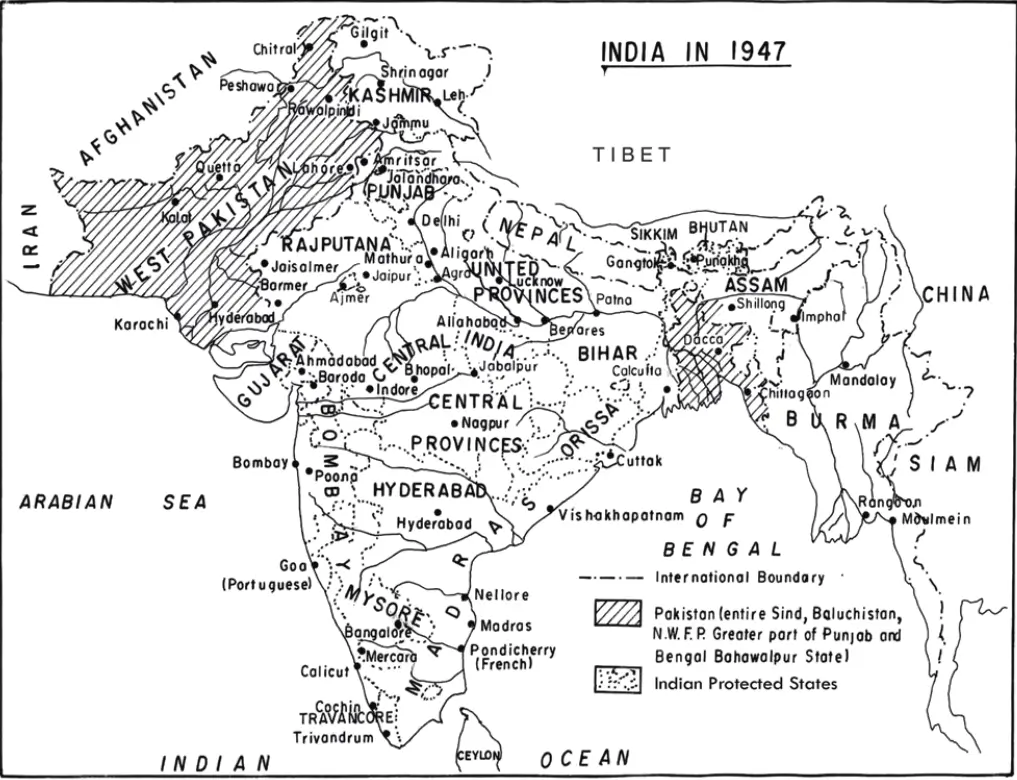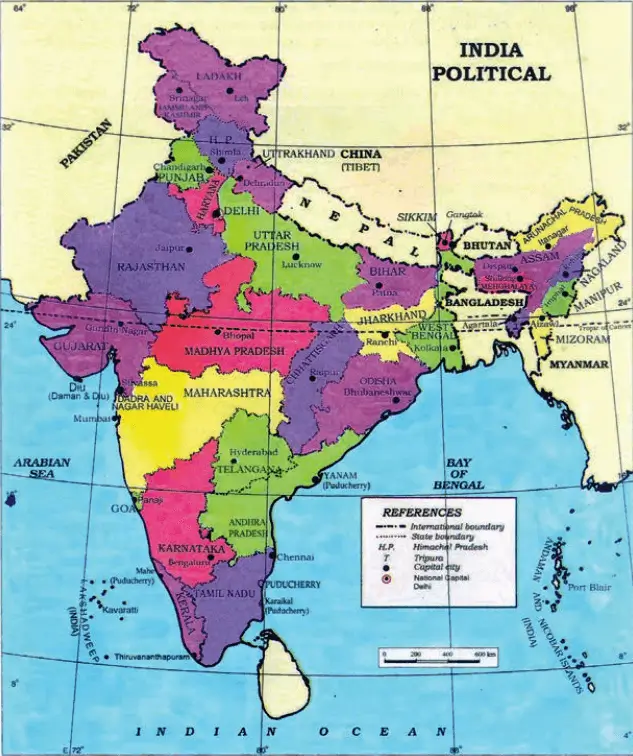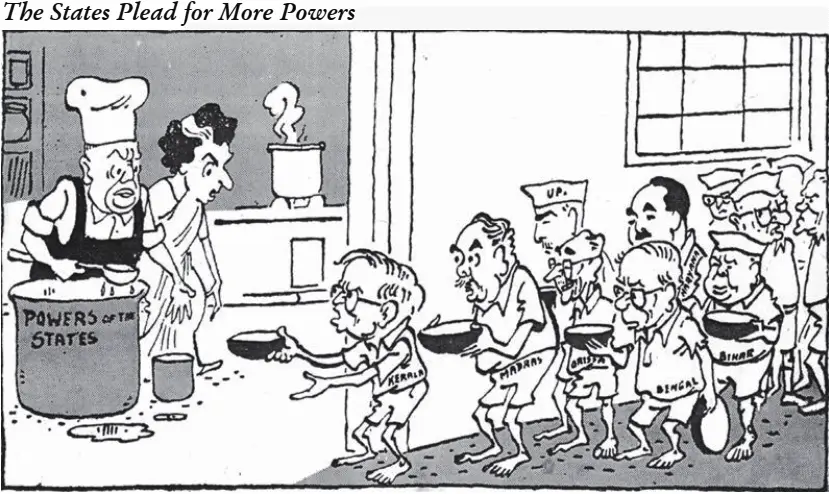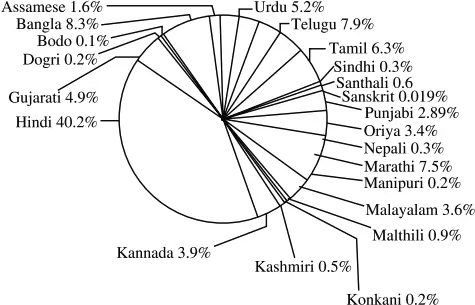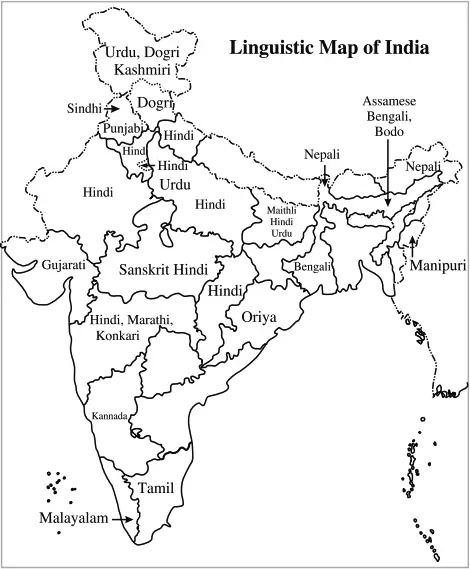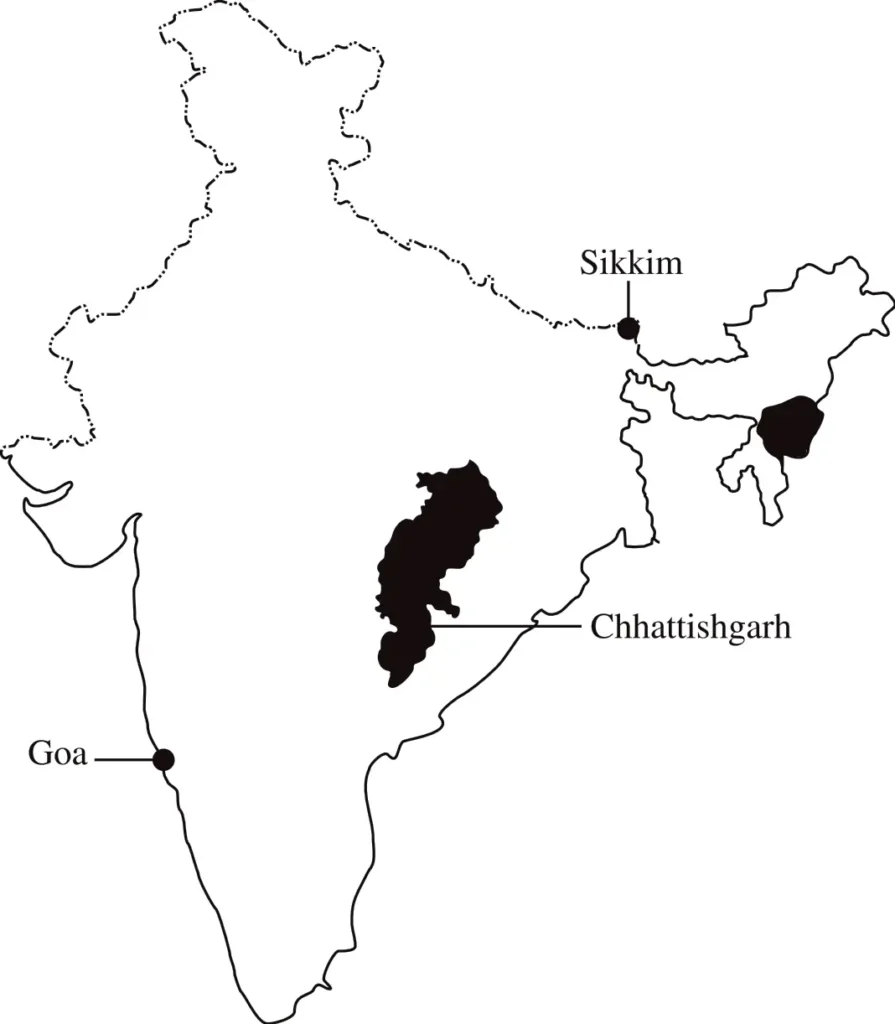NCERT Solutions Class 10 Social Science Chapter 2 Federalism
NCERT Solutions for Social Science Class 10 Political Science Chapter 2 – Federalism contain the solutions to the In-chapter questions and exercises given in the Political Science book – Democratic Politics-II. In this chapter, students will mainly find questions related to power distribution to accommodate linguistic and regional diversities.. These NCERT Solutions provide the answers to all questions in a simple and easy-to-understand way. Attempting these answers in the exam will surely help the students in scoring high marks.
NCERT Solutions
Intext Questions
Question.1.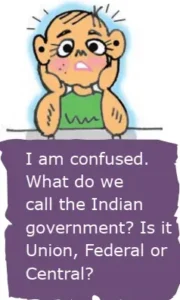
Question.2. 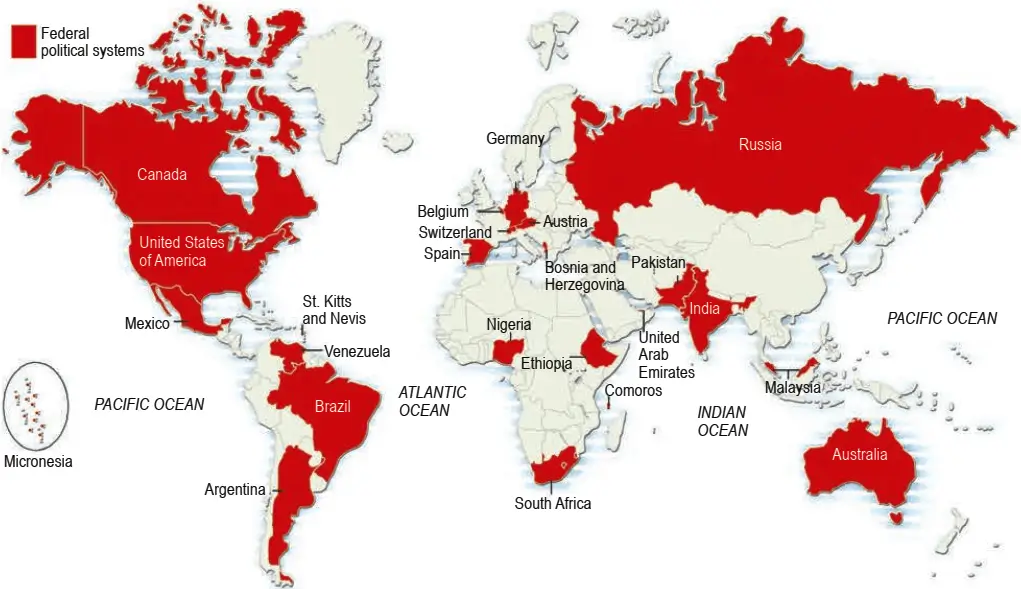
Ans. Yes, China, which is the most populous country of the world which does not practice the federal system of sharing of power. Instead, it enjoys a unitary political system.
Question.3. 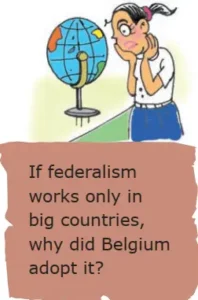
Let us Revise
Question.1. Some Nepalese citizens were discussing the proposals on the adoption of federalism in their new Constitution. This is what some of them said:
- Khag Raj: I don’t like federalism. It would lead to reservation of seats for different caste groups as in India.
- Sarita : Ours is not a very big country. We don’t need federalism.
- Babu Lal: I am hopeful that Teria areas will get more autonomy if they get their own state government.
- Ram Ganesh: I like federalism because it will mean that powers that were earlier enjoyed by the king will now be exercised by our elected representatives.
(A) If you were participating in this conversation what would be your response to each of these?
(B) Which of these reflect a wrong understanding of what federalism is?
(C) What makes India a federal country?
Ans. (A)
- Response to Khag Raj: I disagree with your opinion that different caste groups are being given their rights, which they have been kept deprived of for years. Federalism works when there is mutual trust among different sections of the society. This is the spirit of democracy.
- Response to Sarita: No Sarita, Country is big or small does not matter in making a country federal. Nepal is also a diverse country consisting of a group of people having different interests. For example, Belgium is a small country with diverse social groups. This could only be resolved by making a federation. So, we also need a federal system that empowers its people equally.
- Response to Babu Lal: Yes, I agree with Babu Lal. Along with the Terai area, there are other areas as well which need more autonomy. So, the only way is to form a federal system so that each region gets its own share and can live together with mutual trust and contribute to the development of the nation equally.
- Response to Ram Ganesh: Yes, I agree. Power should not get concentrated in one hand, it harms the will of the common people. In a democracy, people govern themselves through self- governance. The decentralization of power will ensure due respect to diverse groups and views that exist in the society, and everyone will have a voice in the shaping of public policy.
(B) Of these, Khag Raj and Sarita have a wrong understanding of what federalism is.
(C) In India there are three levels of government : The central, state and local governments. These have their own jurisdictions. There is a Constitution which declares their powers and duties. There is an apex court under an independent judiciary, which can resolve disputes among them. All the state governments have their own sources of income. Income is also shared with the central government. All these features make India a federal country.
Question.2. 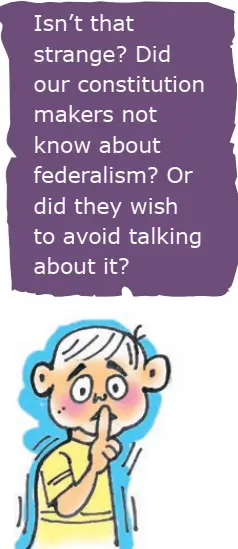
Question.3. 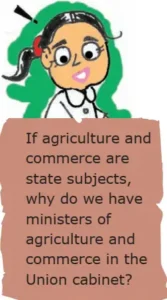
Question.4. Listen to one national and one regional news bulletin broadcast by All India Radio daily for one week. make a list of news items related to government policies or decisions by classifying these into the following categories:
- News items that relate only to the Central Government.
- News items that relate only to your or any other State Government.
- News items about the relationship between the Central and State Governments.
Ans. While listening to the news, keep in mind the Union List, State List and Concurrent List. Classify the news according to these lists.
Let us Revise
Question.1. Pokhran, the place where India conducted its nuclear tests, lies in Rajasthan.
Suppose the Government of Rajasthan was opposed to the Central Government’s nuclear policy, could it prevent the Government of India from conducting the nuclear tests?
Ans. No, the Government of Rajasthan cannot prevent the Government of India from conducting the nuclear tests.
Question.2. Suppose the Government of Sikkim plans to introduce new textbooks in its schools. But the Union Government does not like the style and content of the new textbooks. In that case, does the state government need to take permission from the Union Government before these textbooks can be launched?
Ans. Yes, in this case the Government of Sikkim will have to take permission from the Union Government, because education is a subject of Concurrent list on which both the state and Union governments can make laws and, in case of any conflict of law, only the Union law prevails.
Question.3. Suppose the Chief Ministers of Andhra Pradesh, Chhattisgarh and Orissa have different policies on how their state police should respond to the naxalites. And the Prime Minister of India intervenes and passes an order that all the Chief Ministers will have to obey?
Ans. No, police is a state subject on which only the states can make laws.
Question.4. Has your village or town remained under the same state since independence? If not, what was the name of the earlier state?
Ans. No, my town has not remained under the same state since independence. I am from Haridwar, it is in Uttrakhand and was earlier in Uttar Pradesh.
Question.5. Can you identify three state names in 1947 that have changed later?
Ans.
- Madhya Pradesh was called Central Province
- Punjab was a part of North- West Province
- Rajasthan was a part of Rajputana.
Question.6. Identify any three states which have been carved out of a bigger state.
Ans.
- Jharkhand from Bihar.
- Chhattisgarh from Madhya Pradesh.
- Uttarakhand from Uttar Pradesh.
Question.7. 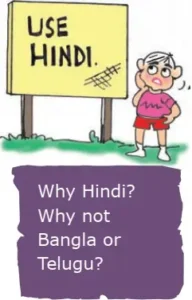
Question.8. Here are two cartoons showing the relationship between Centre and State. Should the state go to the Centre with a begging bowl? How can the leader of a coalition keep the partners of the government satisfied?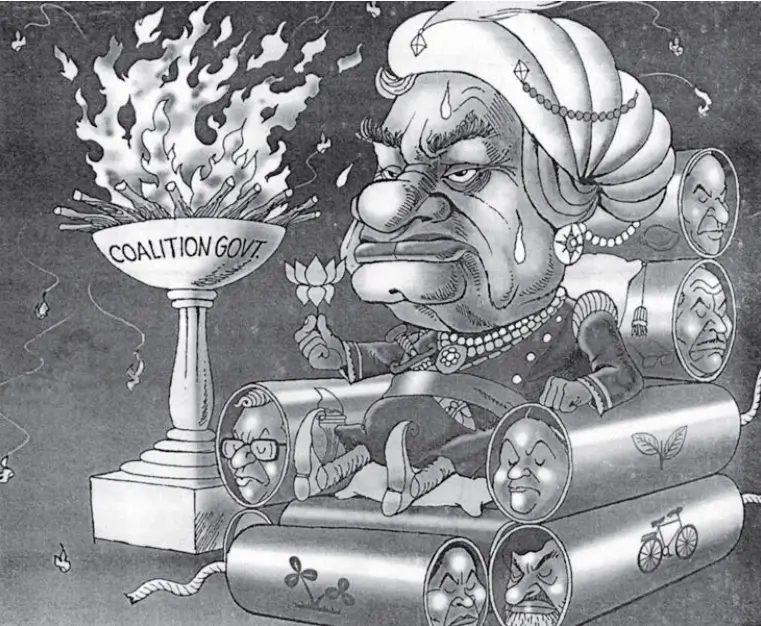
(i) No, the state should not go to the Centre with a begging bowl.
(ii) The leader of a coalition can keep the partners of the government satisfied by sharing the power then and working on a “Common minimum programmes” prepared with the consent of all coalition partners.
Question.9. 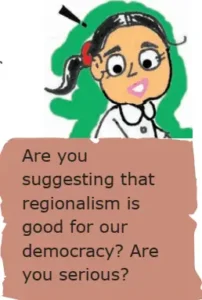
Question.10. Scheduled languages of India
| Language | Proportion of Speakers (%) |
|---|---|
| Assamese | 1.26 |
| Bengali | 8.03 |
| Bodo | 0.12 |
| Dogri | 0.21 |
| Gujarati | 4.58 |
| Hindi | 43.63 |
| Kannada | 3.61 |
| Kashmiri | 0.56 |
| Konkani | 0.19 |
| Maithili | 1.12 |
| Malayalam | 2.88 |
| Manipuri | 0.15 |
| Marathi | 6.86 |
| Nepali | 0.24 |
| Odia | 3.10 |
| Punjabi | 2.74 |
| Santali | 0.61 |
| Sindhi | 0.23 |
| Tamil | 5.70 |
| Telugo | 6.70 |
| Urdu | 4.19 |
(A) Make a bar or pie chart on the basis of this information.
Ans.
(B) Prepare a map of linguistic diversity of India by shading the region where each of these languages is spoken on the map of India.
Ans.
(C) Find out about three languages that are spoken in India but are not included in this table.
Ans. Bhojpuri, Magadhi, Bundel- khandi, Chhattisgarhi, Rajasthani, Bhili.
Question.11. Read the following excerpts from an article by noted historian, Ramachandra Guha, that appeared in the Times of India on November 1, 2006: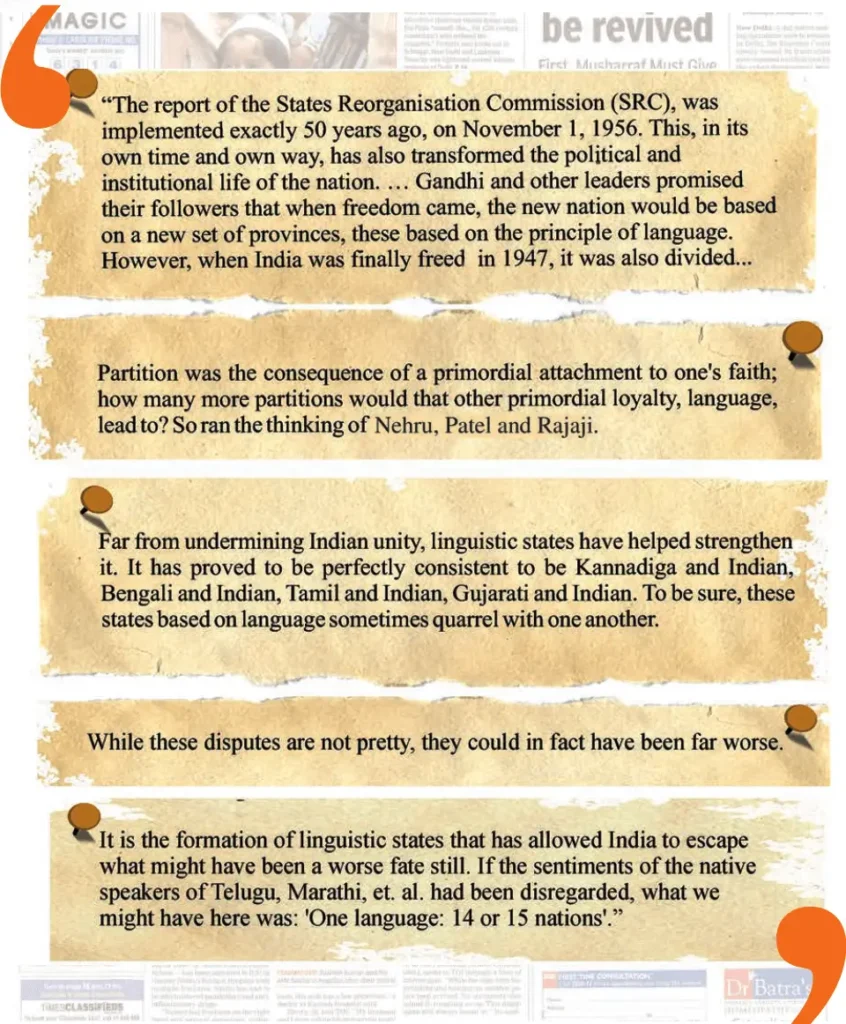
Ans. As we have seen in Sri Lanka, alienation of the people on the basis of language has led to a social conflict which ruined the country and created a situation of civil war. But, in India, even with about 114 major languages, we live in peace and prosperity with the spirit of togetherness.
My state Andhra Pradesh is the state to be formed on the basis of linguistic division. The protests in my state started when Andhra people got sidelined in jobs and educational institutions in Madras State. After division, both states developed because of easier administration.
As we have seen in Tamil Nadu, stopping the use of English has caused a militant movement, so linguistic tolerance is a must for our country. In fact, formation of states on the basis of language has made the country more united and stronger. It has also made administration easier.
Question.12. 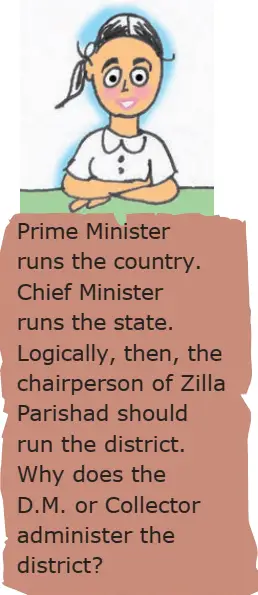
Because D.M. or Collectors are the representatives of the Union Government and under a three tier system the chairperson of Zilla Parishad is accountable to the representatives of the Union Government.
Question.13. What do these newspaper clippings have to say about efforts of decentralization in India?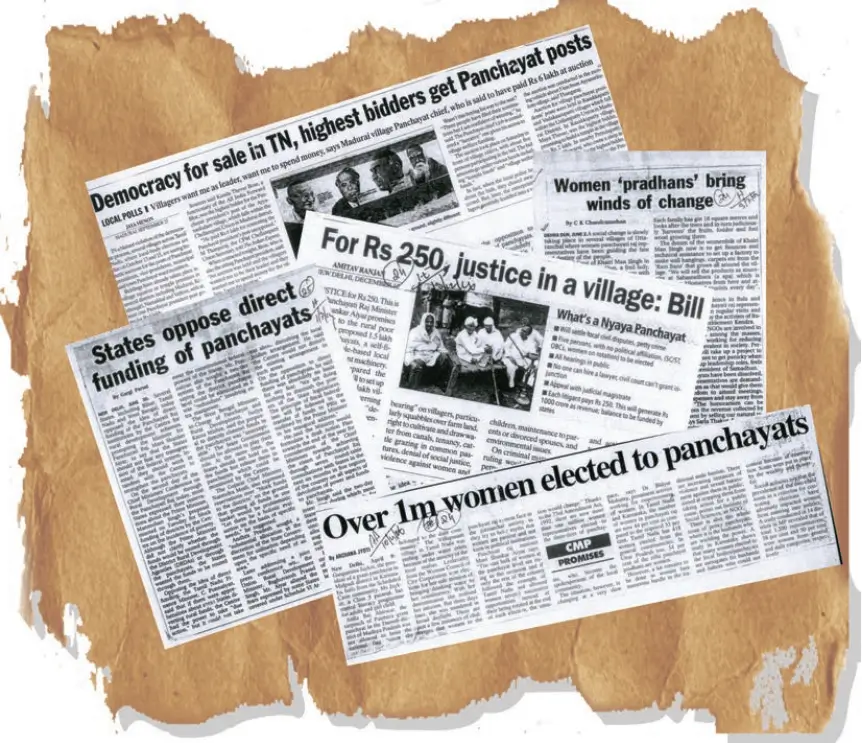
These are meant for self- governance at the grassroots level. These also reflect that Panchayats get direct funding from the central Government.
Let us Revise
Question.1. Find out about the local government in the village or town you live in.
If you live in a village, find out the names of the following: your panch or ward member, your sarpanch, your panchayat samiti, the chairperson of your zilla parishad. Also find out when the last meeting of the gram sabha took place and how many people took part in that.
If you live in urban areas, find out the name of your municipal councilor, and the municipal chairperson or mayor. Also find out about the budget of your municipal corporation, municipality and the major items on which money was spent.
Ans. I live in a village of less than 500 people hence my living place is called Hamlet.
And we just have a ward member and my panchayat is in a nearby village.
Name of my Village:
Ward Member: G Dastagiri
Sarpanch: k. Raju
Panchayat samiti: Battaluru Grama Panchayathi
Chairperson of Zilla Parishad: S. Ramanjaneyulu.
The last meeting of the gram sabha took place 10 days back and around 50 people had taken part in it.
TEXTBOOK EXERCISE
Question.1. What is the main difference between a federal form of government and a unitary one? Explain with an example.
Ans. Under the federal system, generally, there are two sets of government i.e., national and state. Powers are divided between the two. For example in India, there are three lists – Union list, State list, and Concurrent list. The central or national government makes laws on the subjects in the Union List. These are subjects of national importance such as defense, foreign affairs and currency.
The state governments enact laws on the subjects included in the state list. These subjects are of state and local importance such as police, trade, agriculture and irrigation. Both the governments can enact laws on the subjects included in the concurrent list which includes subjects of common interest. These are education, forest, trade unions, and marriage etc.
On the other hand, under the unitary system, there is only one level of government at the national level. There are no provincial or state governments as we have in India. There is, therefore, no division of powers. The units or provincial government, if any, are subordinate to the central government or national government as in England. The central or national government has all the powers.
Question.2. State any two differences between the local government before and after the Constitutional amendment in 1992.
Ans. A major step towards decentralization was taken in 1992. The Constitution was amended to make the third-tier of democracy more powerful and effective. Now it is constitutionally mandated to hold regular elections to local government bodies. Seats are reserved in the elected bodies and the executive heads of these institutions for the Scheduled Castes, Scheduled Tribes and Other Backward Classes.
At least one-third of all positions are reserved for women. An independent institution called the State Election Commission has been created in each State to conduct panchayat and municipal elections. The State governments are required to share some powers and revenue with local government bodies. The nature of sharing varies from State to State.
Question.3. Locate the following States on a blank outline political map of India: Manipur, Sikkim, Chhattisgarh, and Goa.
Ans.
Question.4. Identify and shade three federal countries (other than India) on a blank outline political map of the world.
Ans. 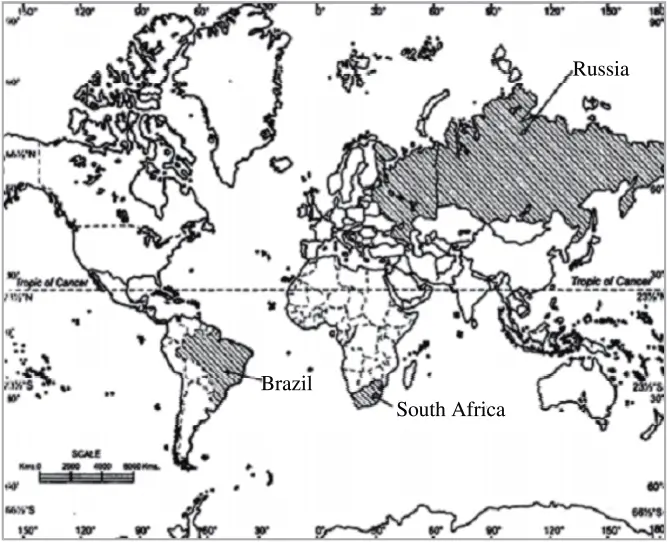
Question.5. Point out one feature in the practice of federalism in India that is similar to and one feature that is different from that of Belgium.
Ans. (1) Similar features: Distribution of powers : In both the countries, power has been divided among the national government, state (provincial) government, and local governments (community govt, in Belgium).
In Belgium,
- The regional governments have jurisdiction over transportation, public works, water policy, education, public health, and housing, etc.
- The community government has the power regarding cultural, educational, and language-related issues. In India, for example
- The legislative powers have been divided between the Union Govt and the State Governments.
- It contains three lists – Union list, State list, and Concurrent list.
- By the Act of 1992, the third tier e., local govts, have been granted more powers.
(2) Different features: Forms ofgovernment: In Belgium in addition to Central and State government, there is a third kind of government that is community government. This is elected by people belonging to one language community – Dutch, French, and German-speaking – no matter where they live. This government deals with cultural, educational, and language-related issues. In India, there is no such government.
In India, there is a three-tier government. The third government is the local government i.e., Panchayats at the village level and Municipalities at the town level. These bodies have been given powers by constitutional amendment in 1992.
Some of the provisions of the Act are as mentioned below :
- Mandatory to hold regular elections to local govt bodies.
- Reservation of seats for SC/ST/OBC.
- Reservation of 1/3 seats for women.
- State Election Commission to hold elections.
- State govt, to share some powers.
Question.6. Fill in the blanks :
Since the United States is a ___________________ type of federation, all the constituent States have equal powers and States are ______________ vis-à-vis the federal government. But India is a _____________________ type of federation and some States have more power than others. In India, the ____________ government has more powers.
Ans. (1) coming together (2) strong (3) holding together (4) central
Question.7. Here are three reactions to the language policy followed in India. Give an argument and an example to support any of these positions.
Sangeeta: The policy of accommodation has strengthened national unity.
Arman: The language-based States have divided us by making everyone conscious of their language.
Harish: This policy has only helped to consolidate the dominance of English over all other languages.
Ans. The position held by Sangeeta that the policy of accommodation has strengthened national unity is correct. The Central Government agreed to continue the use of English along with Hindi for official purposes to avoid the Lankan kind of situation. Otherwise, the movement against Hindi would have taken a more ugly turn. The promotion of Hindi continues to be the official policy of the Government of India.
Promotion does not mean that the Central Government can impose Hindi on states where people speak a different language. The flexibility shown by our leaders helped our country avoid the kind of situation that Sri Lanka finds itself in. Thus the policy of accommodation has strengthened national unity. Hindi is being used along with English for official purposes.
Question.8. The distinguishing feature of a federal government is :
(a) The National government gives some powers to the provincial government.
(b) Power is distributed among the legislature, executive, and judiciary.
(c) Elected officials exercise supreme power in the government.
(d) Governmental power is divided between different levels of government.
Ans. We know that, federal government is that form of government in which the government is formed of three branches: legislative, executive and judiciary and hence the governmental power is divided between these different levels of government.
Therefore option (iv) is correct.
Question.9. A few subjects in various Lists of the Indian Constitution are given here.
Group them under the Union, State, and Concurrent Lists as provided in the table below :
A. Defence; B. Police; C. Agriculture; D. Education; E. Banking; F. Forests; G. Communications; H. Trade; I. Marriages.
| Union List | |
| State List | |
| Concurrent List |
Ans. (C) 1-B, 2-D, 3-A, 4-C.
| Union List | Defence, Banking and Communications. |
| State List | Police, Agriculture and Trade. |
| Concurrent List | Education, Forests and Marriages. |
Question.10. Examine the following pairs that give the level of government in India and the powers of the government at that level to make laws on the subjects mentioned against each. Which of the following pairs is not correctly matched?
(A) State government State List
(B) Central government Union List
(C) Central and State Concurrent List government
(D) Local goverments Residuary powers
Ans. (D) Local governments – Residuary powers.
It is not correctly matched because the residuary powers have been given to the Central Government.
Question.11. Match List I with List-II and select the correct answer using the codes given below the lists :
| List-I | List-II |
|---|---|
| 1. Union of India | a. Prime Minister |
| 2. State | b. Sarpanch |
| 3. Municipal Corporation | c. Governor |
| 4. Gram Panchayat | d. Mayor |
| 1 | 2 | 3 | 4 | |
|---|---|---|---|---|
| (A) | d | a | b | c |
| (B) | b | c | d | a |
| (C) | a | c | d | b |
| (D) | c | d | a | b |
Ans. (C) a, c, d, b.
Question.12. Consider the following statements:
(A) In a federation, the powers of the federal and provincial governments are clearly demarcated.
(B) India is a federation because the powers of the Union and State Governments are specified in the Constitution and they have exclusive jurisdiction on their respective subjects.
(C) Sri Lanka is a federation because the country is divided into provinces.
(D) India is no longer a federation because some powers of the States have been devolved to the local government bodies.
Which of the statements given above are correct?
(A) a, b, and c
(B) A, C, and d
(C) a and b only
(D) b and c only
Ans. (C) a and b only
(C) is Incorrect : Sri Lanka is a unitary system where the national government has all the powers.
(D) is Incorrect : India is a kind of ‘holding together’ federations. In this category, the central government tends to be more powerful vis-à-vis the States.


